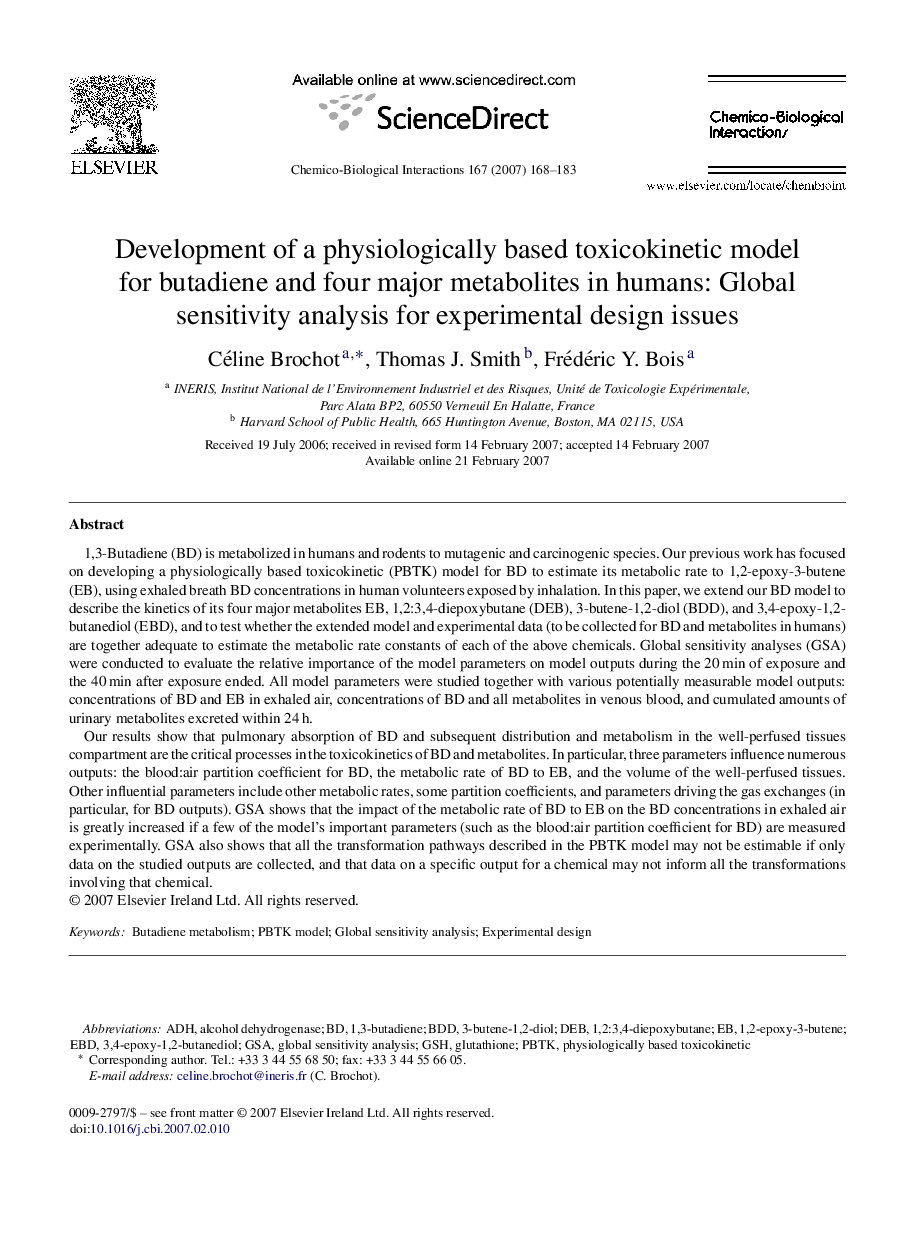| کد مقاله | کد نشریه | سال انتشار | مقاله انگلیسی | نسخه تمام متن |
|---|---|---|---|---|
| 2581953 | 1130214 | 2007 | 16 صفحه PDF | دانلود رایگان |

1,3-Butadiene (BD) is metabolized in humans and rodents to mutagenic and carcinogenic species. Our previous work has focused on developing a physiologically based toxicokinetic (PBTK) model for BD to estimate its metabolic rate to 1,2-epoxy-3-butene (EB), using exhaled breath BD concentrations in human volunteers exposed by inhalation. In this paper, we extend our BD model to describe the kinetics of its four major metabolites EB, 1,2:3,4-diepoxybutane (DEB), 3-butene-1,2-diol (BDD), and 3,4-epoxy-1,2-butanediol (EBD), and to test whether the extended model and experimental data (to be collected for BD and metabolites in humans) are together adequate to estimate the metabolic rate constants of each of the above chemicals. Global sensitivity analyses (GSA) were conducted to evaluate the relative importance of the model parameters on model outputs during the 20 min of exposure and the 40 min after exposure ended. All model parameters were studied together with various potentially measurable model outputs: concentrations of BD and EB in exhaled air, concentrations of BD and all metabolites in venous blood, and cumulated amounts of urinary metabolites excreted within 24 h.Our results show that pulmonary absorption of BD and subsequent distribution and metabolism in the well-perfused tissues compartment are the critical processes in the toxicokinetics of BD and metabolites. In particular, three parameters influence numerous outputs: the blood:air partition coefficient for BD, the metabolic rate of BD to EB, and the volume of the well-perfused tissues. Other influential parameters include other metabolic rates, some partition coefficients, and parameters driving the gas exchanges (in particular, for BD outputs). GSA shows that the impact of the metabolic rate of BD to EB on the BD concentrations in exhaled air is greatly increased if a few of the model's important parameters (such as the blood:air partition coefficient for BD) are measured experimentally. GSA also shows that all the transformation pathways described in the PBTK model may not be estimable if only data on the studied outputs are collected, and that data on a specific output for a chemical may not inform all the transformations involving that chemical.
Journal: Chemico-Biological Interactions - Volume 167, Issue 3, 1 May 2007, Pages 168–183